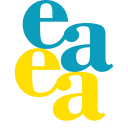Developments: Adult learning is still largely associated with formal education
Overall, the Bosnia and Herzegovinian responses see a slight deterioration of the situation in adult learning and education (ALE) compared to previous years. From the point of view of the EAEA members, Association for Local Development Initiatives (ALDI) and Center for Education and Research Nahla, there were no important changes in Bosnia and Herzegovina (BiH) in terms of new policies and strategies.
On paper, the perception of lifelong learning and adult education in Bosnia and Herzegovina follows the broad definitions of the EU and UNESCO. In practice, adult education in Bosnia and Herzegovina is still largely concentrated on formal learning activities, which relate to vocational education, retraining, recertification and the work environment.
According to ALDI, the perception that education and learning are age-bound and end on completion of formal education is still widely shared. People are mostly motivated to participate in adult education to get a job or improve their career chances. Very few people study with the sole motivation of personal self-development.
Education governance in Bosnia and Herzegovina
BiH has a complex state structure, and education is governed by the country’s entities and cantons. A total of 15 government bodies, spread across three levels of governance, are in charge of education administration. Education is coordinated at the state level by the Ministry of Civil Affairs, which has only recently created a separate focal point position for adult education.
BiH has two central planning documents for adult education:
- Principles and Standards in the Field of Adult Education in BiH and
- Strategic Platform for the Development of Adult Education in the Context of Lifelong Learning in BiH 2014-2020
The results of the Strategic Platform 2014-2020 are currently being evaluated. The authorities have decided to draft a new strategic document to guide ALE ambitions in the coming years.
Financing of adult education
The funding situation of ALE in Bosnia and Herzegovina has slightly deteriorated since last year. According to Nahla, this is mainly due to the changed priorities of the government and the scarce financial resources. Scarce resources are usually allocated to the most urgent needs, such as used for the continuity of primary and secondary education, teachers’ salaries and basic infrastructure maintenance.
BiH spends around 4% of its GDP on education. There is no specific budget line for adult education. In contrast to formal education, which is largely publicly financed, financing adult education is a shared responsibility involving municipalities, employers, employees, business and professional associations, NGOs, scientific and educational institutions and individuals. ALE activities in BiH are mainly funded with project funding, operating grants, fees and donations.
CONFINTEA VII
Civil society organisations from Bosnia and Herzegovina had the opportunity to participate virtually in CONFINTEA VII, UNESCO International Conference on Adult Education.
According to EAEA members, CONFINTEA is an important process from a civil society perspective, but it is not taken into account in national policymaking in ALE in BiH. Thus, the Marrakech Framework for Action, the outcome of CONFINTEA VII, will not be a key guiding document for ALE in Bosnia and Herzegovina.
Sustainability
The two EAEA members state that BiH is fully committed to the Agenda 2030. However, a strategy to develop and implement a tangible monitoring and evaluation system for SDG 4 in the Bosnian context is lacking so far.
CEI Nahla is main-streaming learning about and for sustainability, while ALDI is currently working on a strategy to promote sustainability in their learning programs.
Learners’ voice
The legislation does not currently require adult learners to be included in decision-making processes in BiH. Adult learners cannot have a voice in national or regional ALE policymaking. The learners’ voice is made visible through communication activities.












































